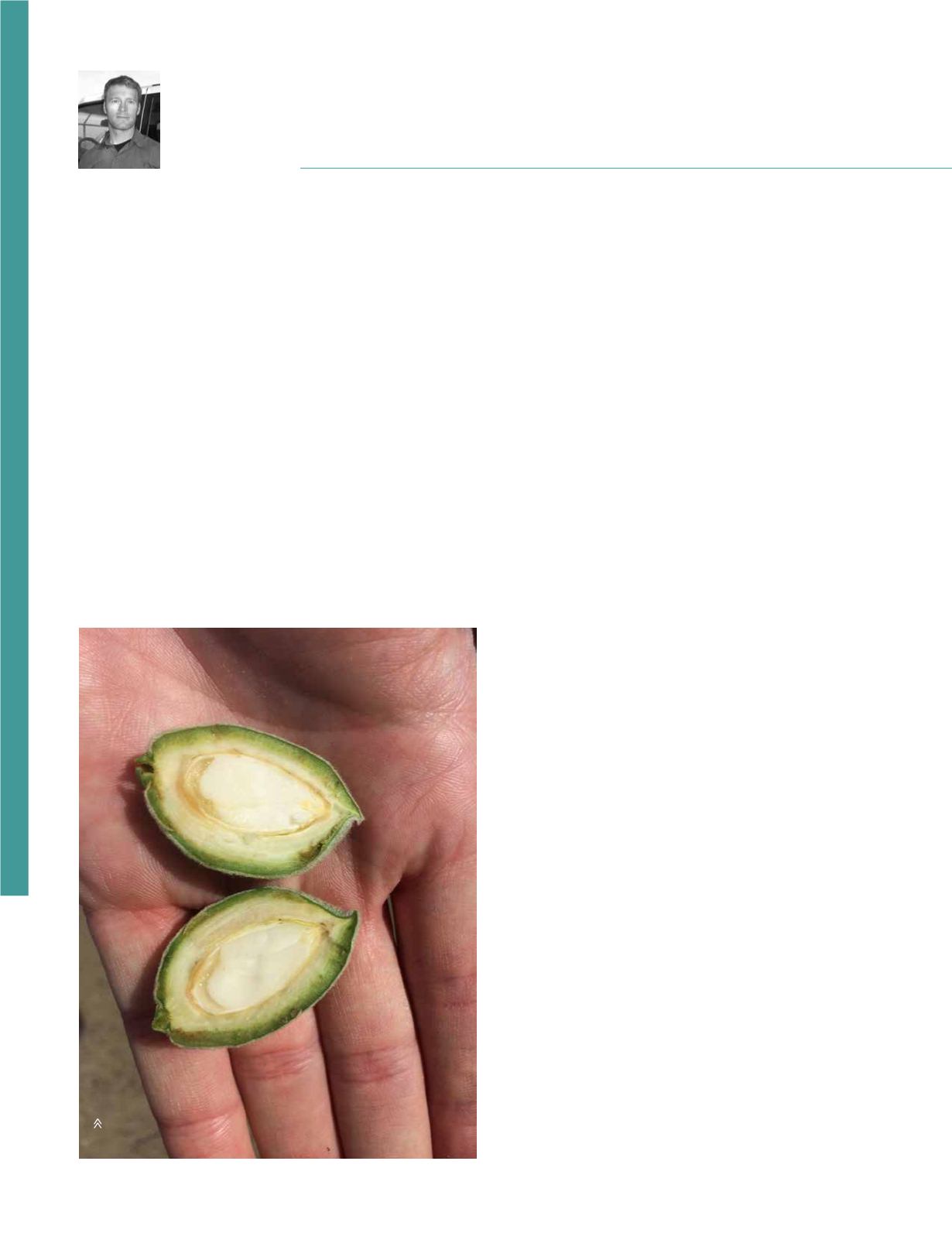
38
Almond Facts
MAY | JUNE 2015
Almond kernel development is ahead of schedule. Kernel fill for Nonpareil was completed in many
locations of the northern San Joaquin Valley around mid-May, suggesting that the season is progressing
two to three weeks weeks ahead of "normal." This means that hull-split and harvest will occur earlier
than normal, impacting nutrient, irrigation, and insecticide timings. Every orchard will progress
differently depending on location and varieties, so it is important to monitor the progression on an
orchard basis.
Irrigation Prior to Hull-Split
Research has shown that a mild to moderate water stress
applied just prior to and maintained through the first week
of hull-split may help with harvesting and reduce hull rot.
This practice is known as regulated deficit irrigation (RDI).
Irrigation durations should be reduced and plant stress
should be monitored using the pressure chamber until a
stem water potential of -15 bars is achieved. Depending
on soil and irrigation practices, this may take a few days to
several weeks and may require a 10 to 15 percent reduction
in water applied. The stress should be maintained for two
to three weeks. Once hull-split is progressing, then full
irrigation should resume until the pre-harvest programs
begin.
Be careful not to over-stress the trees. Too much stress
during the hull-split period can decrease kernel weights and
cause "textured" kernels. If trees have been deficit irrigated
through the season due to drought conditions, RDI is not
advised. More information can be found in Publication
#8515 "Drought Management for California Almonds"
available for free at
/.
Hull-Rot Management
Hull rot is a fungal infection of the splitting hull by either
Rhizopus stolonifer or Monilinia spp. Toxins produced
by these fungi move into the tree, killing spurs and wood
within the canopy, impacting future production. Trees that
are over-fertilized and -irrigated tend to have increased
hull-rot. Nitrogen applications should be minimized
after kernel fill and, if possible, RDI should be applied.
Fungicides have been shown to be effective in reducing
strikes by Rhizopus, but must be timed to the initial
splitting of the almond hull. This usually coincides with
NOW sprays. Hull split fungicide sprays do not reduce hull
rot by Monilinia spp. Data indicates that fungicides for
Monilinia need to be applied in early to mid June to reduce
latent infections of the hull.
Managing Navel Orangeworm
If navel orangeworm (NOW) populations are high, hull-split
sprays should be made to protect the crop from infestation.
Sprays should be made at the onset of hull-split (e.g. 1 to
5 percent). Often at this time, blanks begin to split in the
interior of the orchard. Most reduced-risk pesticides need
to be applied prior to egg laying or hatching, supporting
this earlier timing. Pyrethroids (e.g. Brigade, Warrior),
organophosphates (e.g. Lorsban), and chlorantraniliprole
(e.g. Altacor) have shown adult activity and may be suitable
for later timed hull-split sprays. Although lower in cost,
pyrethroids have been shown to impact spider mite predators
for at least 6 months after the hull-split application. Second
sprays for 'Nonpareils' and coverage for later splitting
pollinators may be needed, especially in areas with higher
temperatures and NOW populations. Work with your pest
control advisor to determine the best strategy for timings and
pesticide selection.
TIME TO CONSIDER
Time To Consider
DAVID DOLL
Almond kernel development nearing completion within a
'Nonpareil' almond. Photo Credit: David Doll.


